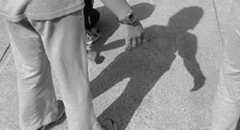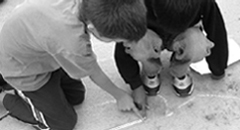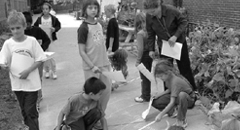
|

|

|
With regard to documentation as a process of observation, critical analysis, and interpretation, one challenge is slowing students down in their observations before they draw conclusions or make interpretations. Many students leap over describing what they see to go directly to analysis without a lot of evidence. Seeking multiple perspectives as part of the documentation process is one way to help students take more time. On the other hand, many students know how to tell a "beautiful story," but without critical analysis. One teacher educator talked about finding ways to create "contexts of need" or the need to know and inquire through documentation. Other suggestions included:
- Emphasize the questions that emerge from observation and documentation. The questions and puzzles themselves that emerge from observation and documentation should be valued and inform next steps.
- Name the investigation itself as an act of reflection and analysis. When it comes time to pull an investigation together, look for patterns and give the investigation a name. But don't name it too soon because the naming itself is a reflective act that uncovers complexity, rather than puts something in a neat package.
- Bring in multiple perspectives. Complexity does not just emerge from continued analysis, but from the need to articulate a shared understanding to more than one person. For example, start with "critical friend" dyads of students which then become foursomes. Students also learn to critique and support each other's work, rather than rely on the instructor alone for feedback. Instructors might also keep a parallel portfolio to the student's so that they can share observations and reflections on the same topic from a different perspective.
- Look at documentation through multiple lenses. Looking at documentation through a series of lenses--developmental, pedagogical, and theoretical--can support and focus students' thinking. Having an expandable framework such as David Hawkins' "I, Thou, It" or creating one's own analytic framework is also helpful. One sequence for students to follow after careful observation might be: 1) say what you saw in everyday language; 2) discuss your observations with your peers to enlarge your analysis; 3) seek out what the experts say in the literature or the field.
[Home] [Site Map]